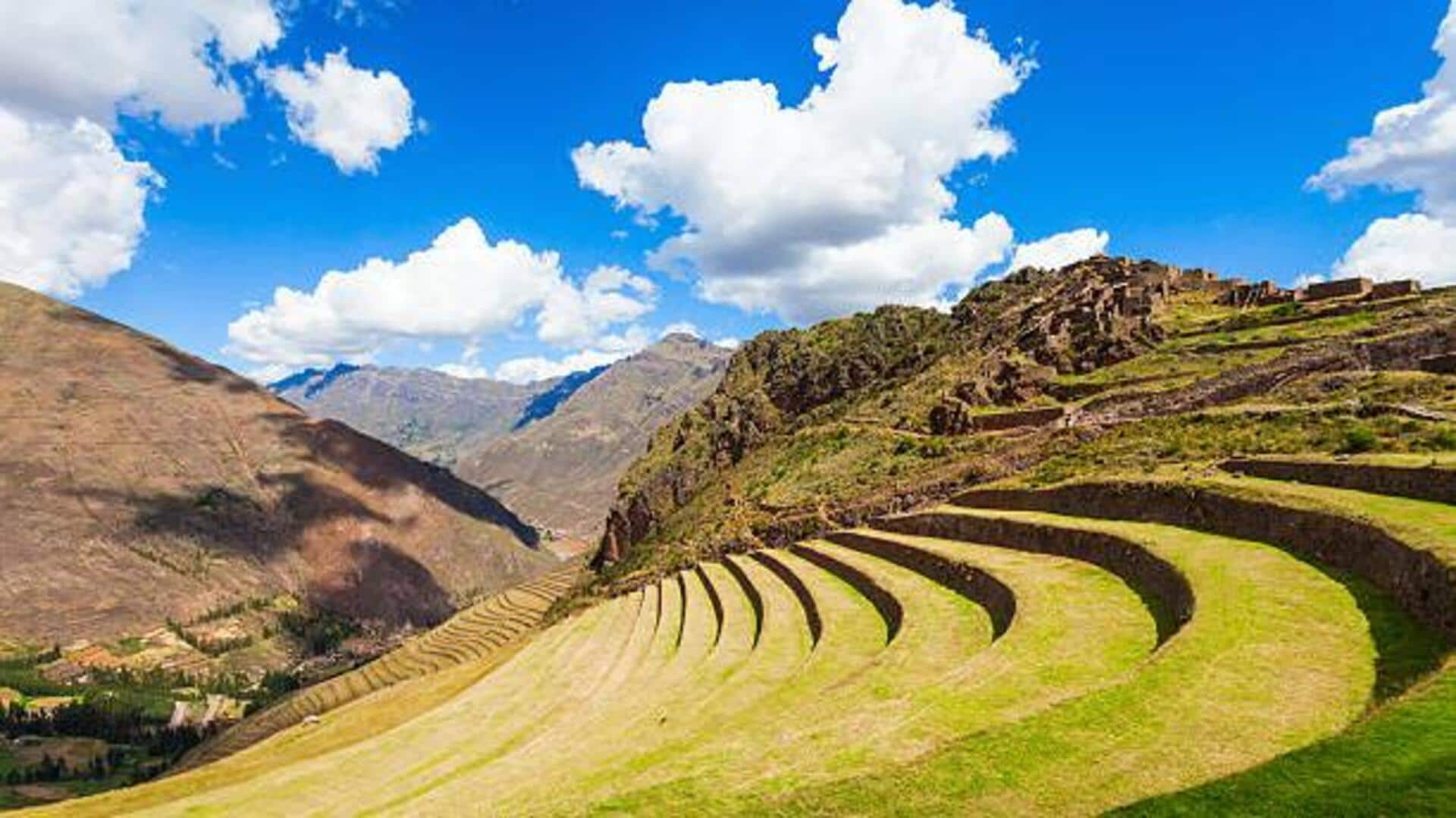
Why Peru's Sacred Valley is a must-visit
What's the story
Peru's Sacred Valley is a treasure trove of ancient sites and stunning landscapes. Famous for its rich history and cultural significance, the valley is a must-visit for history buffs. The valley is dotted with Incan ruins, traditional villages, and breathtaking views. Exploring these sites gives an insight into the Inca civilization and its architectural prowess. Here's a guide to some of the most fascinating places in Peru's Sacred Valley.
Ollantaytambo
Discovering Ollantaytambo Ruins
Ollantaytambo is famous for its well-preserved ruins that give a glimpse of Inca military architecture. The site is perched on a hilltop, overlooking the town below. Visitors can explore terraced fields, temples, and ceremonial centers while enjoying sweeping views of the surrounding mountains. Ollantaytambo also serves as a gateway to Machu Picchu, making it an important stop on any Sacred Valley itinerary.
Pisac
Exploring Pisac Market & Ruins
Pisac is famous for its lively market and impressive ruins perched on a mountain above the town. The market is a great place to shop for handicrafts, textiles, and souvenirs made by local artisans. The ruins themselves feature agricultural terraces and religious structures that highlight the ingenuity of Inca engineering. The site also offers stunning views of the valley below.
Moray
Venturing into Moray's agricultural terraces
Moray is famous for its unique circular terraces that were used as an agricultural laboratory by the Incas. These terraces allowed them to experiment with different crops at varying altitudes. The site features several concentric circles, each with different microclimates ideal for growing various plants. This innovative approach to agriculture shows how advanced Inca farming techniques were.
Maras
Visiting Maras salt mines
The Maras salt mines are one of Peru's most picturesque sights, with thousands of white salt pools dotting the mountainside. These pools have been in use since pre-Columbian times, when salt was harvested from underground brine sources. These sources were then funneled into these pools through a system of channels. The channels allowed evaporation under the sun's heat, leaving behind crystals ready for collection.